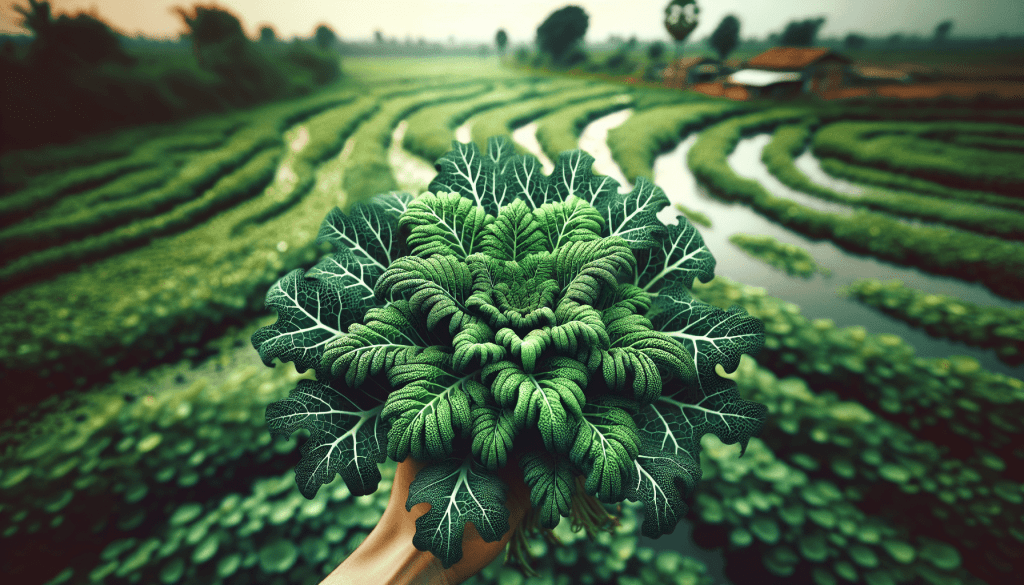Have you ever looked at your agricultural land and wondered how to control the frustrating spread of alligator weed? You’re not alone in this struggle. Alligator weed, with its aggressive growth, can quickly invade and dominate your fields, affecting productivity and causing significant management challenges. Understanding how to efficiently manage this invasive species is crucial for maintaining the health and yield of your crops.
Understanding Alligator Weed
Before diving into management techniques, it’s essential to grasp what alligator weed is and why it poses a threat. Alligator weed (Alternanthera philoxeroides) is a perennial plant native to South America that has spread across many parts of the world. It’s notorious for its ability to thrive in both terrestrial and aquatic environments, making it a formidable opponent in agricultural management.
Identification
Recognizing alligator weed is the first step in battling it. Typically, it has hollow stems, which can root at the nodes, allowing it to spread rapidly. The plant features opposite leaves that are elliptic and around 2-4 cm long. Its flowers are small, white, and papery, appearing somewhat similar to clover heads.
Impact of Alligator Weed
The presence of alligator weed in agricultural lands can lead to reduced crop yields and increased management costs. It competes aggressively with crops for resources and can hinder water flow in irrigation channels. Therefore, understanding its impact can help you prioritize management practices on your land.

Top 10 Alligator Weed Management Techniques
Effective management of alligator weed requires a multifaceted approach. Here are ten strategies that can aid in controlling this resilient weed.
1. Mechanical Control
Mechanical control involves physical removal methods and can be quite effective, especially in smaller infestations.
Hand Pulling
In areas where the weed has not spread extensively, hand pulling can be effective. Ensure you remove the entire plant, including roots, to prevent regrowth.
Mowing
Regular mowing can help manage alligator weed by reducing its ability to photosynthesize efficiently. A consistent mowing schedule can suppress its growth over time.
2. Cultural Practices
Implementing certain agricultural practices can help create an environment less favorable to alligator weed.
Crop Rotation
Changing the types of crops you plant can disrupt the life cycle of the weed and reduce its prevalence. Rotating with crops that are dense-growing or shade-tolerant can outcompete the weed.
Cover Cropping
Using cover crops that grow densely can suppress alligator weed by denying it sunlight and nutrients. Fast-growing cover crops such as rye can be beneficial.
3. Chemical Control
Herbicides can be used selectively for managing large infestations of alligator weed.
Herbicide Selection
Opt for herbicides that specifically target alligator weed without harming your crops. Commonly used herbicides include glyphosate and 2,4-D, but always carefully follow application guidelines.
Application Timing
Timing is crucial. For aquatic settings, applying herbicides when water levels are low can enhance effectiveness. In terrestrial settings, aim for application during the weed’s active growing season.
4. Biological Control
Biological control involves the use of natural enemies to manage alligator weed populations.
Alligator Weed Flea Beetle
The alligator weed flea beetle (Agasicles hygrophila) feeds exclusively on alligator weed and has been introduced in many regions as a control measure. Its larvae and adults feed on the plant, inhibiting its growth and spread.
Considerations
Before releasing biological agents, it’s essential to consider potential impacts on non-target species and ensure compatibility with your local ecosystem.
5. Water Management
In aquatic environments, managing water levels can be an effective tool.
Water-Level Manipulation
By lowering water levels temporarily, you can expose alligator weed to conditions less favorable for its growth. This can be combined with mechanical or chemical controls for greater efficacy.
6. Integrated Pest Management (IPM)
IPM is a holistic approach that combines various management techniques for sustainable long-term control.
Steps in IPM
- Monitoring: Regularly inspect your land for new infestations or changes in weed distribution.
- Threshold Levels: Determine acceptable levels of weed presence that do not significantly affect crop yields.
- Strategic Control: Implement a combination of control methods based on current infestation levels and available resources.
7. Preventative Measures
Prevention is often more cost-effective than control after infestation.
Clean Equipment
Ensure all machinery and tools are cleaned before moving between fields to prevent the spread of alligator weed.
Border Management
Establish buffer zones around water bodies and agricultural plots to limit the weed’s ability to spread.
8. Community Cooperation
Combining efforts with neighboring landowners can enhance management outcomes.
Collaborative Strategies
Pooling resources and knowledge can lead to more efficient large-scale management. Community initiatives can also help in identifying and responding to new infestations more quickly.
9. Monitoring and Research
Stay informed about the latest in alligator weed research and management practices.
Ongoing Research
Keep up to date with academic and extension services for new findings and recommendations. Regularly update management plans based on the latest scientific insights.
10. Education and Training
Educate yourself and others involved in land management about the importance of controlling alligator weed and the techniques available.
Workshops and Seminars
Participating in events led by agricultural extension services can provide you with new insights and practical tips on managing alligator weed effectively.

Conclusion
Managing alligator weed in agricultural lands requires patience, vigilance, and a combination of strategies. By understanding the nature of this invasive species and implementing a mix of mechanical, cultural, chemical, and biological control methods, you can protect your crops and maintain productive agricultural land. Remember, the key is to remain proactive and adaptable in your management efforts, ensuring that your land remains resilient against the persistent challenge of alligator weed.
